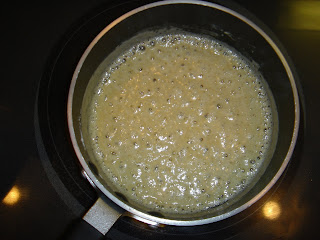4 Cups rice powder
1-1/3 Cups potato starch
2/3 Cup tapioca flour
Because I bake a lot, I always make up twice this much and store it in a 14 cup Rubbermaid container. Since I started making this cake again, it's now expected at every family get-together, despite the fact that 99% of the people there don't have to eat wheat free! And there are never leftovers -- a sure sign of great taste. If you need a quick cake for a crowd, here's your recipe (wheat eaters--use regular flour and leave out the xanthan gum):
Texas Sheet Cake
2 Cups Gluten Free flour mix
2 Cups sugar
1 tsp xanthan gum
1 tsp soda
1/8 tsp salt
Mix together in a large bowl; set aside.
1 cube (8 Tbsp) butter
3 Tbsp unsweetened cocoa powder
1/2 cup vegetable oil
1 Cup water
Mix together in a saucepan; cook over medium high heat stirring constantly until it comes to a boil. Take off heat and stir into flour mixture.
2 large eggs
1/2 Cup buttermilk
1 tsp vanilla extract
Whisk together in a small bowl. Stir into above.
Grease and flour a 13" x 18" cookie sheet. I just use whatever GF mix I'm using in the recipe to flour the pan. Pour batter into cookie sheet and spread to level.
Bake at 400 for 20 minutes. While it's baking make:
Chocolate Frosting for Texas Sheet Cake
1 cube (8 Tbsp) butter
6 Tbsp evaporated milk
3 Tbsp unsweetened cocoa powder
Put into saucepan (you can use the same one you used for the cake to save a pan to wash :) and cook over medium high heat stirring constantly until it comes to a boil. Take off heat, pour into a small mixing bowl and add:
1 tsp vanilla extract
2-1/2 Cups powdered sugar
Beat with hand mixer until smooth. Add more powdered sugar if you want it thicker.
Let cake cool for 10 minutes and frost.
Because the cake is still a little warm, the frosting will melt just slightly and turn shiny and glaze-like on the cake. Allow to finish cooling, cut into pieces (as many as 24!) and serve.
Go ahead and get creative with toppings, if you want (what's not to love about fresh strawberries and chocolate?). Or if you're outdoors at a picnic, go super casual and serve it plain on a paper napkin! I guarantee, everyone will love it!













































